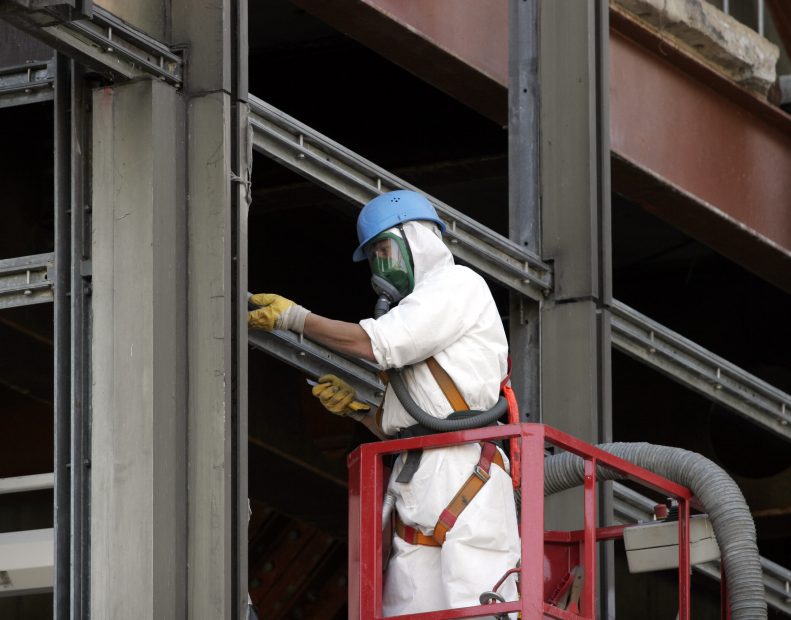Jobs that might bring workers in contact with asbestos dust require special consideration. In such cases, the employer must determine which type of asbestos is present, train workers and seek the approval of regulatory authorities to execute the work.
Asbestos is not visible to the naked eye; its presence can only be confirmed by special lab tests. Asbestos fibers are 200 to 2000 times thinner than hair, and you cannot smell it or taste it. This invisible threat could jeopardize your health with as little as one fiber. That’s why specific workers will need asbestos protection.
Surprisingly enough, many buildings are riddled with asbestos because it was widely used in the construction industry before being banned. Asbestos could be present or incorporated just about anywhere:
- Floor tiles;
- Suspended ceiling tiles;
- Thermal barriers around pipes;
- Blown-in insulation for fire protection;
- Sound insulation;
- Decorative finishes;
- Boiler insulation;
- Asbestos-vinyl or asbestos-cardboard products;
- Concrete or cement;
- Expansion-joint filers for gypsum boards;
- Sheathing and compounds.
Working with asbestos entails special attention to protecting both the workers and people in the surrounding area.
Regulatory authorities determined that work methods and safety equipment fall within 3 levels of risks.
The risk is low as long as the items with asbestos being installed or removed remain in a non-friable state. Required asbestos protection low-risk equipment includes:
- Safety footwear;
- Respiratory protection such as half-masks equipped with a P100 filter;
- Safety glasses;
- Gloves;
- Disposable coveralls appropriate for this type of work;
- Signs to indicate working zones;
- Bags for waste disposal;
- Plastic sheets to cover the furniture in the work area;
- Labels to identify material containing asbestos;
- Tanks with hand pumps to douse materials;
- HEPA vacuum;
- Suction equipment (HEPA) used with drills or other equipment to catch dust when operating equipment.
The risk is medium when no more than 1 cubic feet of friable asbestos is being removed or manipulated. Required asbestos protection medium-risk equipment includes:
- Safety footwear;
- Respiratory equipment such as half-masks equipped with a P100 or PAPR filter with a P100 filter (power flow from 3M);
- Safety glasses;
- Gloves;
- Disposable coveralls appropriate for this type of work;
- Signs to indicate working zones;
- Bags for waste disposal;
- Labels to identify material containing asbestos;
- Tanks with hand pumps to douse materials;
- HEPA vacuum;
- Equipment to seal off the working zone.
The risk is high when more than 1 cubic feet of friable asbestos is being removed or manipulated. In addition, this risk is considered high when a worker must apply a sealant on material containing asbestos or when repairing, modifying or demolishing ovens or boilers containing asbestos-laced refractory products. Required asbestos protection high-risk equipment includes:
- Safety footwear;
- Safety helmet;
- PAPR respiratory protection with full-face mask equipped with a P100 filter (power flow from 3M);
- Gloves;
- Disposable coveralls appropriate for this type of work;
- Signs to indicate working zones;
- Bags for waste disposal;
- Labels to identify material containing asbestos;
- Equipment to seal off working zone using negative pressure;
- HEPA equipment to filter the working area;
- Tanks with hand pumps to douse materials;
- HEPA vacuum;
- And others.
These are but a few of the elements to consider when dealing with asbestos and regulations surrounding this aspect are far more complex. Therefore, this page is not a comprehensive reference document. Before starting work with asbestos, please contact regulatory authorities to obtain all the necessary information.

